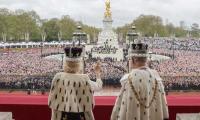minutes later, the Israeli flags had already been placed on the roof.
About 10 security cameras have been mounted on the walls and balconies, and more were being installed.
Their plan was to occupy the premises until five Jewish families move in and while a dormitory for Jewish students is set up, said Luria.
He called Silwan the “crown jewel,” located close to the Jewish quarter of the Old City, the Western Wall and the hilltop al-Aqsa mosque complex, revered by Jews as the Temple Mount.
Silwan is also home to the City of David archaeological site, where tradition holds that the biblical King David established his capital.
The settlers moving into Silwan have no doubt about what they see as Jews’ historical connection to the area. Luria said he will not give up his “homeland”.
“There is no shortage of Arab countries where they can go,” he said, referring to Palestinians in the area.
In order to acquire such buildings, settlers can use a law that places under Israeli state custody property left behind by their owners when they fled during the war surrounding Israel’s creation in 1948.
The US head office of TikTok is shown in Culver City, California, US, September 15, 2020. — ReutersWASHINGTON:...
The Aseman Airlines flight by Shahrzad Shams carrying 110 passengers on board. — IRNA news agency/FileTEHRAN: An...
France's new Prime Minister Francois Bayrou. —AFP/File PARIS: France awaited the appointment of a new government on...
Finland's Prime Minister Petteri Orpo attends a European Union summit in Brussels, Belgium February 1, 2024. —...
Police and emergency services at the site of the deadly attack on Friday night. —AFP/FileBERLIN: The German...
The TikTok logo is pictured outside the company's US head office in Culver City, California, US, September 15, 2020....







